Alaska Fall Foraging
Mid-August usually means the advent of autumn here in Alaska. One of the best parts of our long transition from summer to winter is the opportunity to fill our freezers with delicious treats to hold us over until next summer. That’s right–I’m talking about berries!
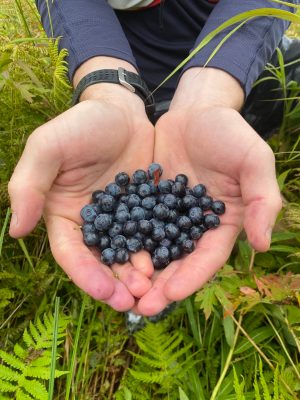
Photo–Caroline Brisbois
Alaska has a number of edible berries. The best way to get started is to pick up an identification book and get to know for yourself. Always do your own learning, and make sure you’re confident about what you are picking! Here are some reliable books:
- Alaska’s Wild Plants, Revised Edition: A guide to Alaska’s Edible and Healthful Harvest
- Alaska’s Wild Berries and Berry-Like Fruit
Once you are familiar with the edible plants here in Alaska, you can start to get out and enjoy them! The easy ones to get started with are highbush and lowbush blueberries. Both are exceedingly common in Southcentral Alaska. We also have many other berries, like Salmon Berries, highbush and lowbush cranberries, currants, cloudberries, and raspberries!
Highbush Blueberries:
Highbush blueberries are usually big, tart, and found on bushes ranging from 2 to 6 feet tall. They have small leaves, and thin, brown stems. It is easy to confuse them with Service Berries, which are also edible–though not as tasty as the classic blueberry! Usually these berries are found below treeline and in the rainforest.
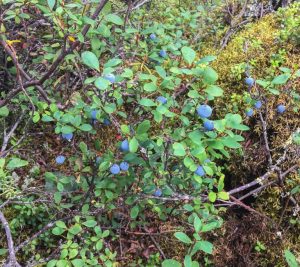
Photo–University of Alaska Fairbanks
Girdwood and sub-alpine areas of the Kenai Peninsula sport highbush blueberries, if you know where to look! Look in places that get lots of rain: these plants like wetter climates and some (though not too much!) shade.
Lowbush Blueberries:
Lowbush blueberries, or alpine blueberries, are found–you guessed it–in the alpine. These little plants are close to the ground; sometimes you even need to get down to their level to see them. They are sweeter, smaller, and often grow among little black Crowberries. Crowberries, while edible, are kind of mealy and lacking in flavor. If you find a good patch, you’ll be hard-pressed to avoid stepping or sitting on them while picking!
Popular places to pick include the Chugatch front range (particularly Arctic Valley), Girdwood, and even Manitoba Mountain! Later in the fall, their leaves turn crimson, adding to the myriad of tundra colors that give the mountains their signature fall look.
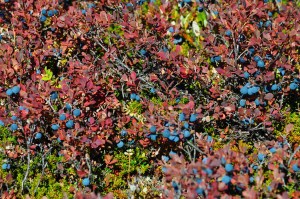
Photo–Paxson Woelber
Salmon Berries:
Think of salmon berries as gigantic, hairy raspberries. They usually are yellow or orange, and can be found in wet places like Prince William Sound or Girdwood. They have a good flavor–but don’t expect a raspberry flavor, because you won’t get it!
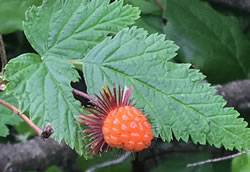
Photo–U.S. Forest Service
Highbush Cranberries:
These tart little berries grow on woody stems up in the air, and truth be told, are not really cranberries. However, they are tart and tasty, so keep an eye out for them!
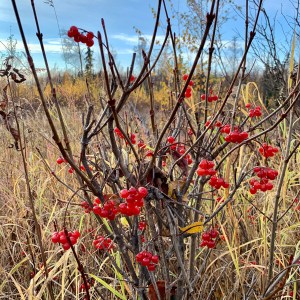
Photo–Alaska Birch Syrup
Lowbush Cranberries:
These little red berries grow in bogs and tundra; here in Southcentral, they can be found above treeline. They grow right on the ground, maybe an inch or two above it. Some people call these lingonberries. They are best after a frost!
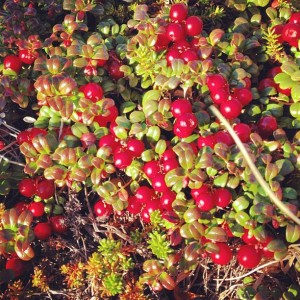
Photo–Alaska Master Gardener
Currants:
Currants are another one of the red berry varieties found here in Southcentral. They grow on tall bushes, and are almost transparent. Their flavor is tart, and there are seeds! Despite this, they make great additions to jams and jellies and other sweet dishes.
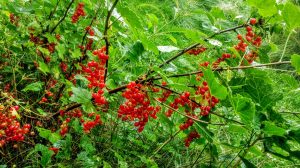
Photo–Alaska Fruits & Berries
Cloudberries:
Cloudberries are often found in bogs and marshes near the coast. They are reddish yellow and grow with a single berry on each plant, about 5 inches off the ground. Sometimes the plants will grow in clusters, other times all alone. They are characterized by a “buttery mango-apricot” flavor.
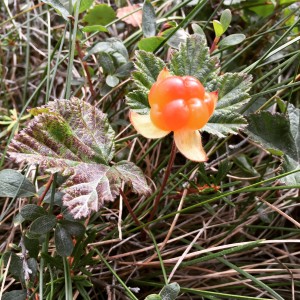
Photo–Alaska Master Gardener
